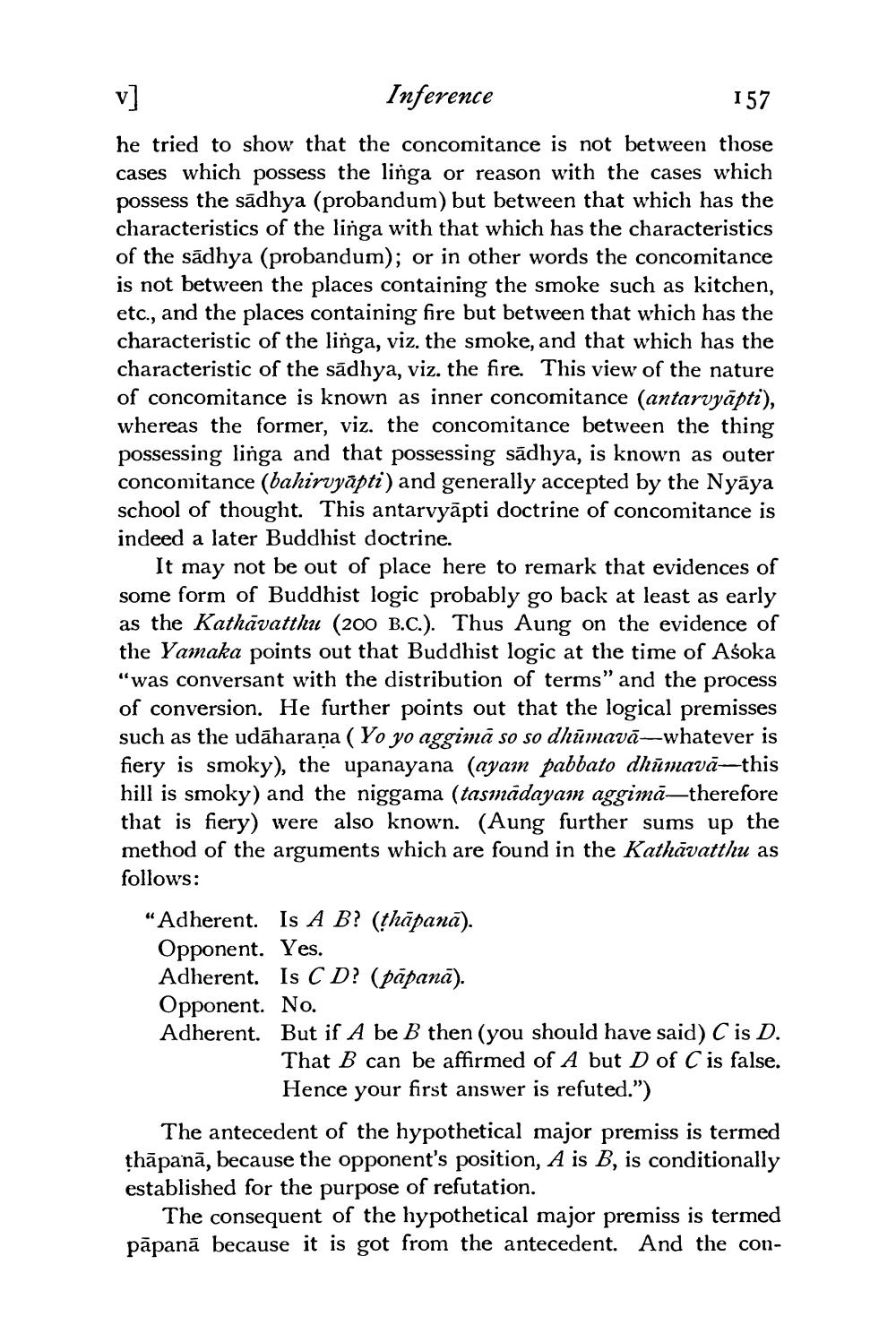________________
Inference
157
he tried to show that the concomitance is not between those cases which possess the linga or reason with the cases which possess the sādhya (probandum) but between that which has the characteristics of the linga with that which has the characteristics of the sādhya (probandum); or in other words the concomitance is not between the places containing the smoke such as kitchen, etc., and the places containing fire but between that which has the characteristic of the linga, viz. the smoke, and that which has the characteristic of the sādhya, viz. the fire. This view of the nature of concomitance is known as inner concomitance (antarvyāpti), whereas the former, viz. the concomitance between the thing possessing linga and that possessing sādhya, is known as outer concomitance (bahirvyāpti) and generally accepted by the Nyāya school of thought. This antarvyāpti doctrine of concomitance is indeed a later Buddhist doctrine.
It may not be out of place here to remark that evidences of some form of Buddhist logic probably go back at least as early as the Kathāvatthu (200 B.C.). Thus Aung on the evidence of the Yamaka points out that Buddhist logic at the time of Asoka "was conversant with the distribution of terms" and the process of conversion. He further points out that the logical premisses such as the udāharana (Yo yo aggimā so so dhūmavā—whatever is fiery is smoky), the upanayana (ayam pabbato dhūmavā-this hill is smoky) and the niggama (tasmādayam aggimā—therefore that is fiery) were also known. (Aung further sums up the method of the arguments which are found in the Kathāvatthu as follows: “Adherent. Is A B? (thāpanā). Opponent. Yes. Adherent. Is CD? (pāpanā). Opponent. No. Adherent. But if A be B then (you should have said) C is D.
That B can be affirmed of A but D of C is false.
Hence your first answer is refuted.") The antecedent of the hypothetical major premiss is termed thāpanā, because the opponent's position, A is B, is conditionally established for the purpose of refutation.
The consequent of the hypothetical major premiss is termed pāpanā because it is got from the antecedent. And the con




